Puerto Iguazu and the Iguazu Falls
Puerto Iguazu and Iguazu Falls
There was a slight mist rising from the middle of the forest green and body of water. It seemed like a plume of fumes rising more than fifty feet in the air and was visible from miles around while everything around it was still. I gasped in sudden realization just as the aircraft turned and we had our eyes glued to windows on the right side through which we could still see what we had come so far to see. I exclaimed,"That must be the falls!" as the airplane started its descent to the Aeropuerto International Cataratas del Iguazu - we hadn't seen the falls itself, just the indication of its existence.
The Iguazu (Iguassu or Iguacu) Falls, considered amongst the world's largest waterfalls, straddle the state of Parana in Brazil and the province of Misiones in Argentina. They form a semicircular shape, running some 2.7 km along the Iguazu river, and divide the river into upper and lower parts. They are said to be the result of a volcanic eruption which led to the formation of a large crack on the earth's surface. The Iguazu Falls are said to be made up of some 275 smaller falls, many of which have their own name (such as Bosetti Falls, Devil's Throat, and San Martin's Falls), with the Devil's Throat (Garganta del Diablo in Spanish) being the tallest of them all at a spectacular 80 m height.

The Iguazu Falls
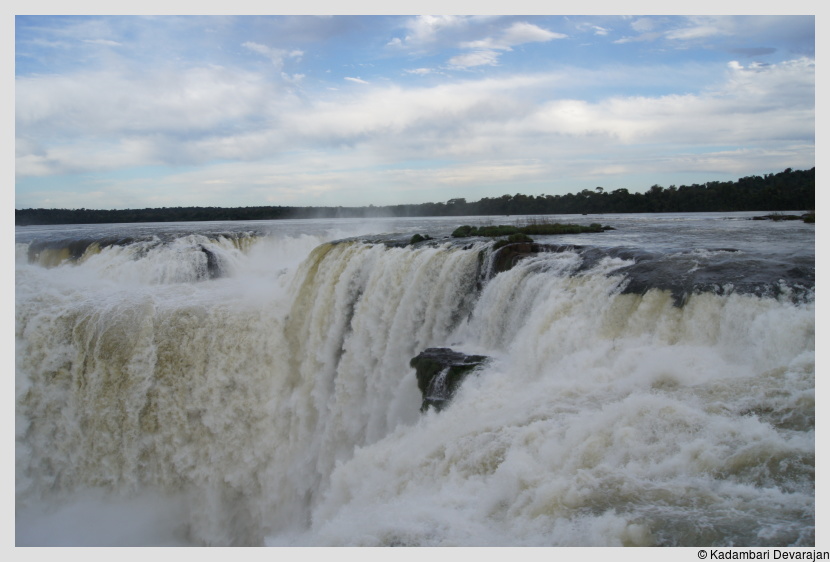
The Devil's Throat
And to think we almost didn't see the Devil's Throat! Almost. It marks the border between Brazil and Argentina with 2/3rds of it falling under Argentine territory. What's more, it has amongst the highest average annual flow of any waterfall in the world! The surface area is exceeded only by the Victoria Falls while it is taller and twice as wide as the Niagara. The locals are very proud of the fact that it is not only a UNESCO World Heritage Site but is also one of the New 7 Wonders of the Natural World (don't ask me what this means - I have long given up keeping up with the different wonders of the world)! The spray generated by this was what we could see from our unintended aerial platform ...

Erupting water
We visited the Argentine side of the Falls through the Parque Nacional Iguazu (there is also a national park on the Brazilian side) which holds a bulk of Argentina's sub-tropical rainforests. This is the home of the Guarani people and one could see them both inside and outside the national park - they were provided space in the well-organized and designed park's visitor center where they could directly sell their handicrafts to tourists.

Parque Nacional Iguazu
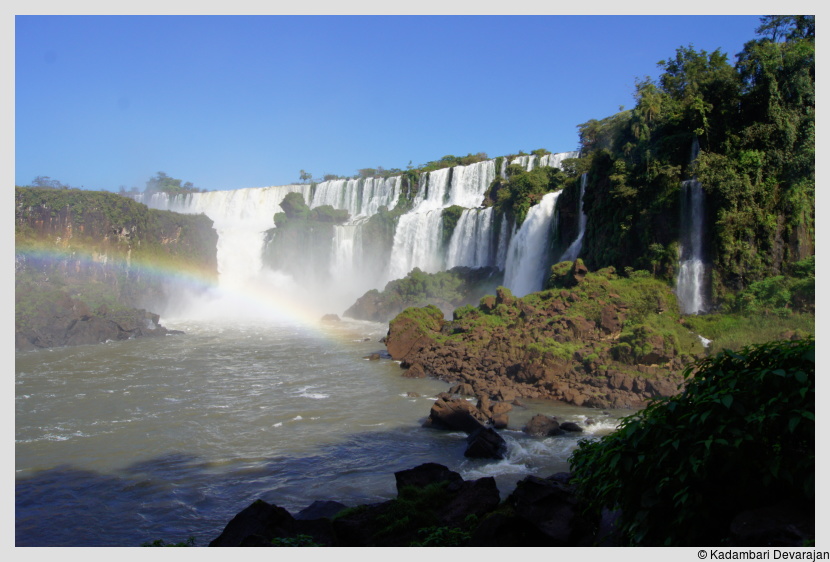
The Iguazu Falls
We had gotten in the previous evening having flown from the southernmost city in the world (and hence, in Argentina) to the northernmost part of Argentina. It was as insane as it sounds. I mean, who does that, right? Well, all the locals looked a little shocked when they heard where we were coming from. We had four lifers before we exited the airport starting with a plover (pics and bird list coming up later).
A cab ride from the airport costs ARG$120 anywhere close to Puerto Iguazu. Puerto Iguazu is a touristy border town that sits at the junction of Brazil, Argentina, and Paraguay. We decided to minimize expenses on the last leg of the journey in the only way possible - by spending one night in el cheapo accommodation. It was the least we could do having spent a bomb so far on the trip. That is how we ended up at the Marcopolo Suites Iguazu - it wasn't too bad but was far from the best accommodation of the trip. The sun was about to set and we rushed out for some quick birdwatching before flagging down a bus (ARG$ 3 per person) to the bus station in Puerto Iguazu.
We desperately needed to book bus tickets to Buenos Aires for the following night so that we would be in time to catch our flight back to India. We managed to get that done quickly (having traveled thousands of kilometres in Argentina by now, we were quite the pros barring our broken Spanish!) and booked coche cama (or sleeper) tickets at Via Bariloche. They even threw in a discount without us asking for one - down to ARG$600 pp from ARG$750. We then booked an adventure boat ride into the falls and a so-called eco-cruise which the nice lady with JUNGLE sold to us with "it is quiet and laidback, no guides, good wildlife opportunities, some even find it romantic!" - how can you say no to that? That came upto ARG$350 pp (only cash) - pricey but quite worth it, I suppose. That was one thing we noticed throughout the country - the travel and activities were very expensive but somehow you got what you paid for - the service at all places was impeccable, we felt safe in all our adventures, and everything was so well organized. It was very different from our experiences in other countries so far - you couldn't call any of these tours (would you call scuba diving or trekking on a glacier a tour?) but more like 'facilitations'. I really don't know what to call these - 'activities' being the closest I can get. But, every place was well mapped out, some of the places were the remotest in the world and still touristy, trails were nice, transportation and roads were fantastic, people warm and friendly, and 'activities' well organized. I digress.
The nice lady (Laura) at the bus terminal recommended A Piacere as serving the best food in town and gave us a voucher for free drinks with our meal. It was virtually next door to the terminal and her recommendation turned out to be spot on. We loved their vegetable risotto - it's the best I've had anywhere in the world. They made a neat and refreshing margarita that went surprisingly well with the risotto, and with that head back to our hotel. We had a long day ahead.
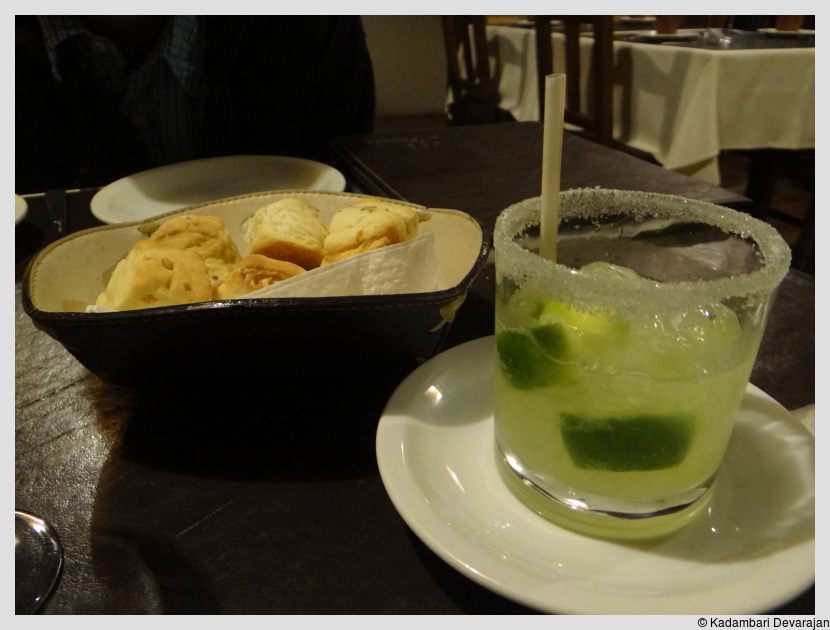
The margarita

The fantastic vegetable risotto at A Piacere
Our day started a little late but we made the most of it, rushed as it was. We took the bus to the Parque Nacional Iguazu (ARG$30 pp from anywhere near Puerto Iguazu to the park), quickly got our entry tickets (ARG$130 pp, second day half price if you get your ticket stamped after the first day), and strolled in. Our adventure trip to the falls was scheduled for 1130 hrs or so, and one of the guys at the JUNGLE center recommended that we go on the Macuco trail (Senderero Macuco) if we wanted to do any birdwatching.
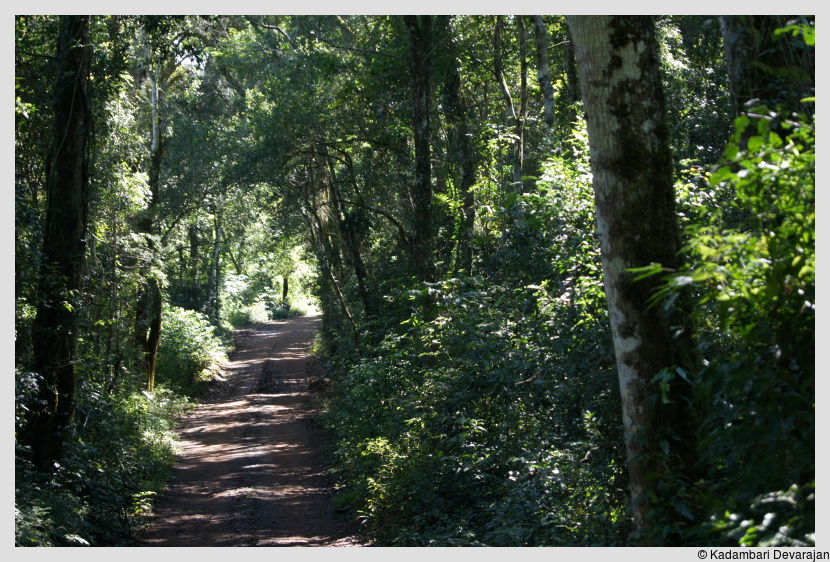
The trail we took ...
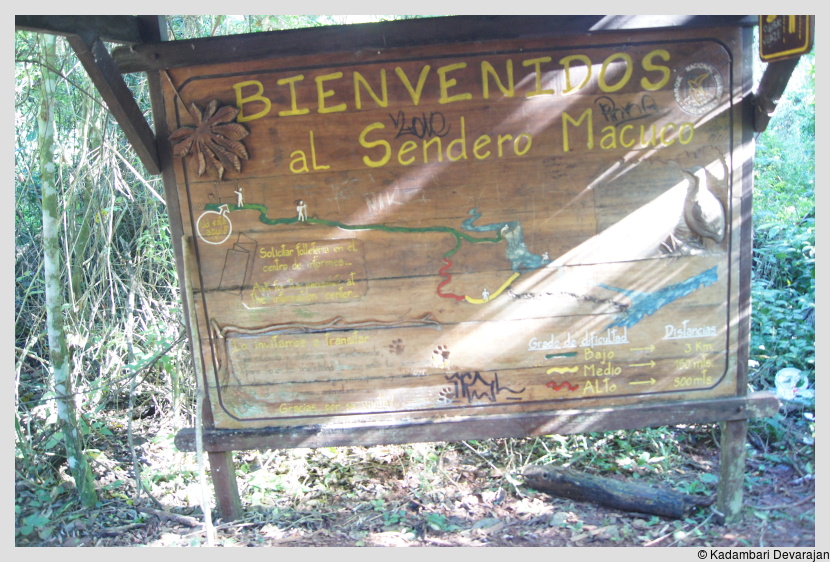
A map of the trail near its entrance.
So, off we went on our trail and what a pleasant morning it turned out to be - we saw some 15 species of birds in that hour of easy hiking, the highlight of which was the Chestnut-eared Aracari (Pteroglossus castanotis). I was a little ahead of my partner at one point and thought I heard a call that sounded like a toucan's. I went ahead looking for the bird when I stumbled on the aracari. I managed to catch his attention with some gesticulation and found a second one by the time he caught sight of the first hidden amidst dense foliage. By the end of two minutes, we had seen five of them in that one patch. It's a bad idea to hope for sightings when watching wildlife - for one, it has great potential for disappointment. Nonetheless, I announced to him that I have two creatures on my wishlist for the day - the coati and the toco toucan, neither of which is too hard to spot in this part of the world. Or so I thought!
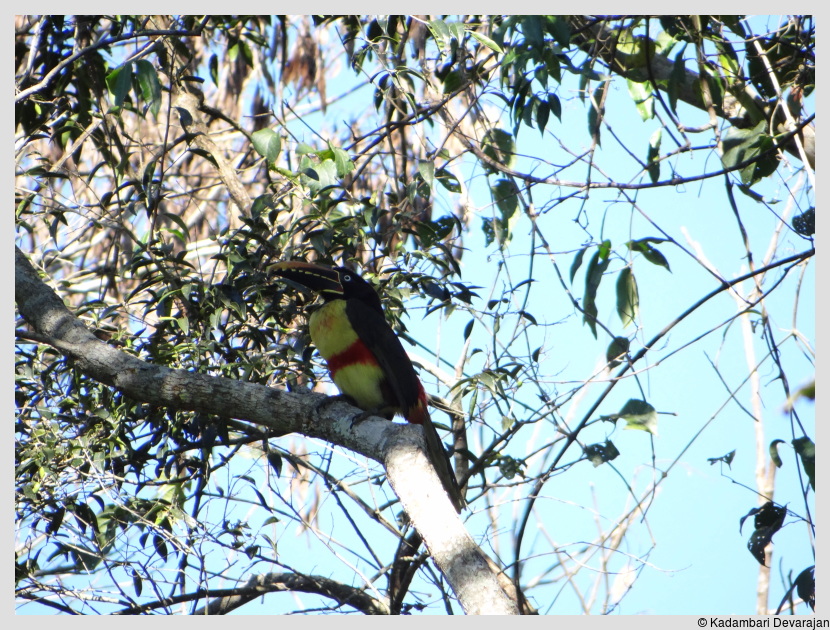
Chestnut-eared Aracari
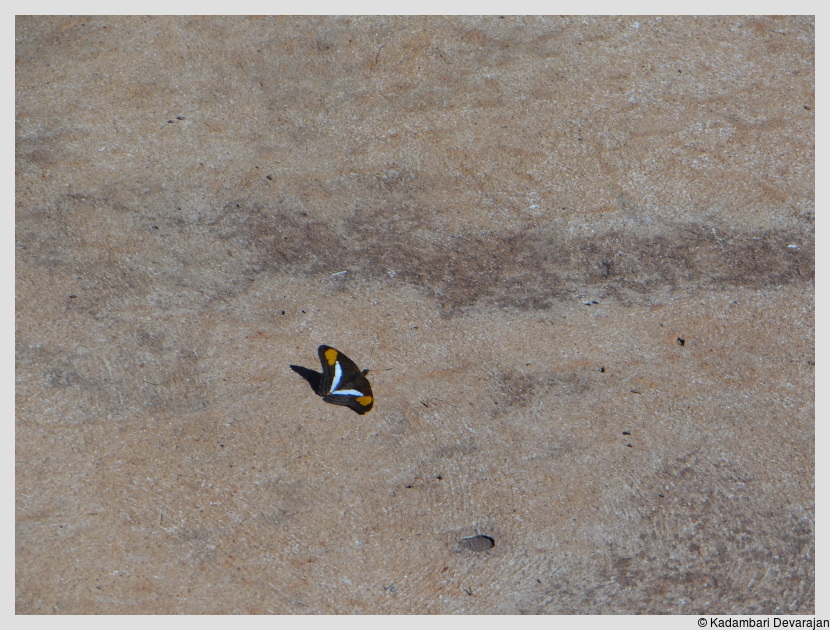
Unid butterfly
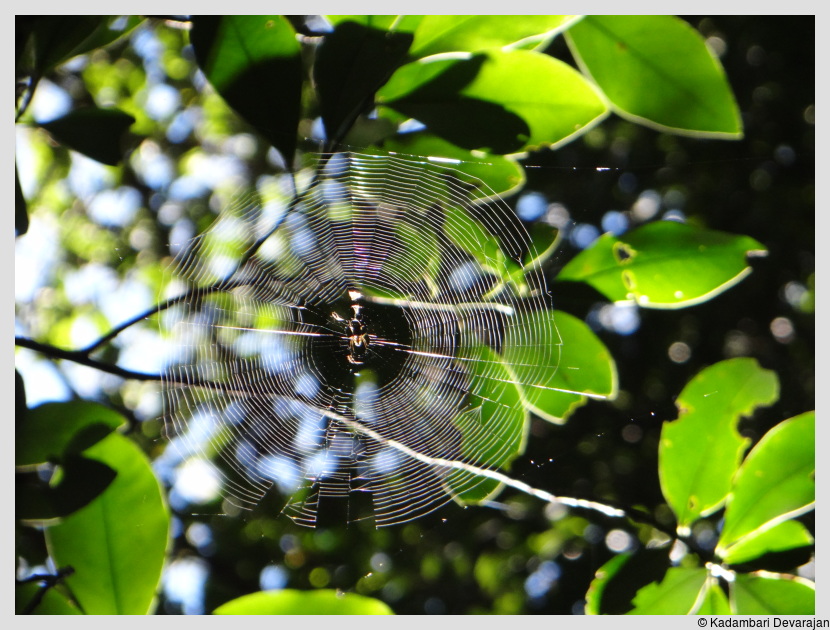
Unid spider
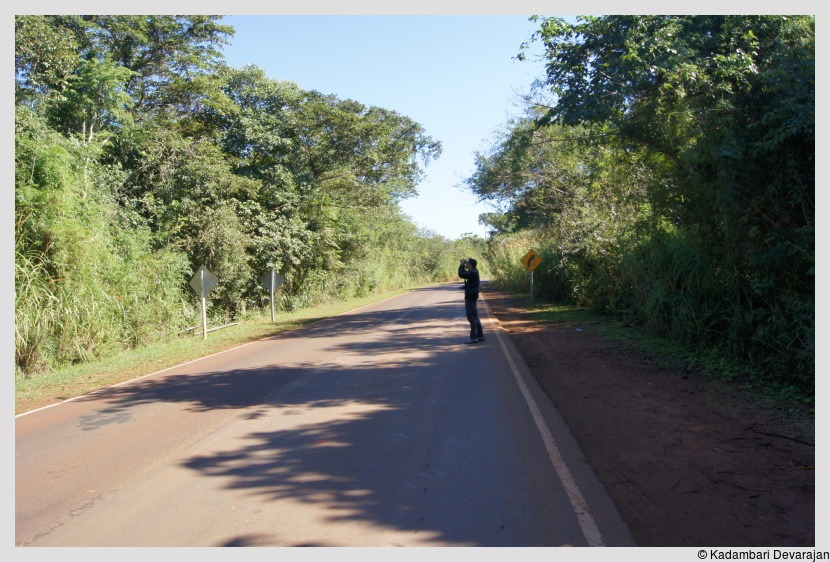
My partner busily watching birds
We got back from the trail with minutes to spare for the adventure trip that was to start with a truck ride into the jungle towards the river. I decided to take a quick look at the colorful and gorgeous handicrafts kept on display by some Guarani.
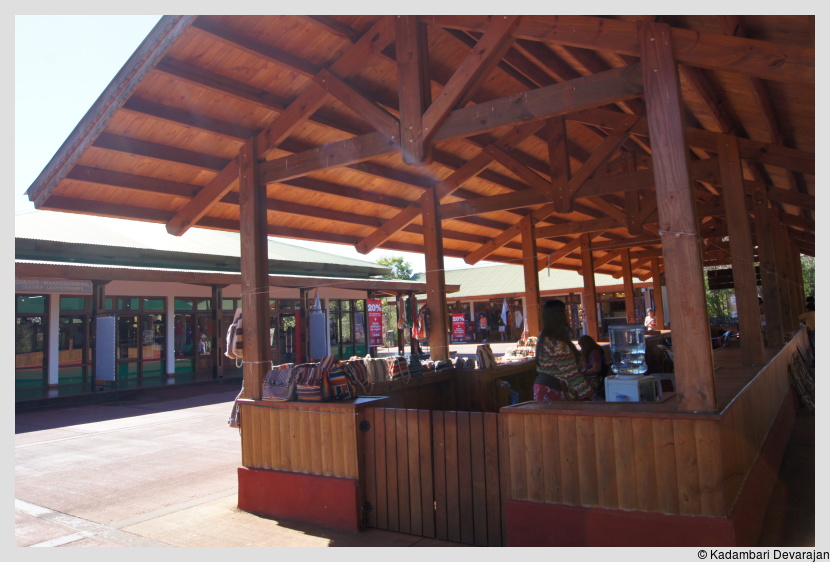
The stall with the Guarani and their handicrafts
I quickly turned back not wanting to miss the truck or stray far, when I saw a mammal (definitely a mammal) streak behind my partner who was looking at some weaver bird nests on a palm tree. I started running toward him and he ran in a different direction. I managed to find my mammal and got a few pictures - turned out to be my first coati ! I went looking for my partner and found him mesmerized by a parade of coatis.
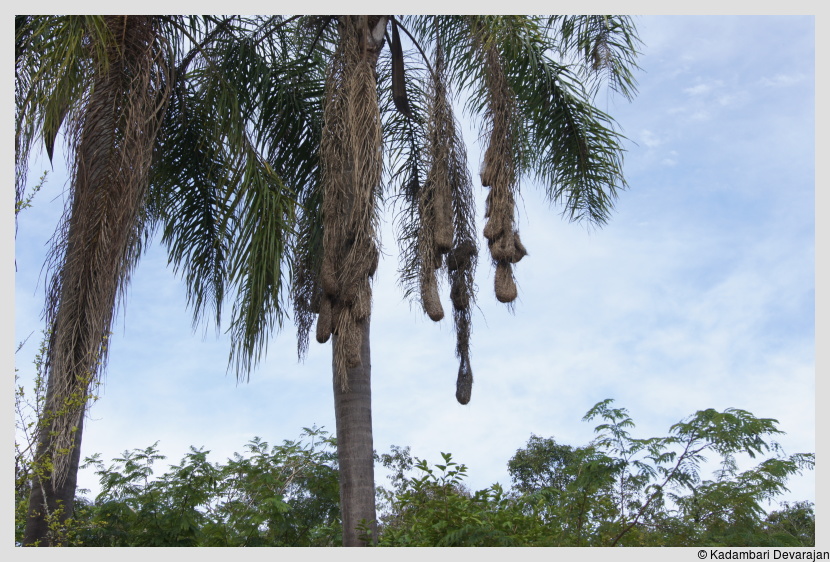
The weaver bird nests that my partner was looking at
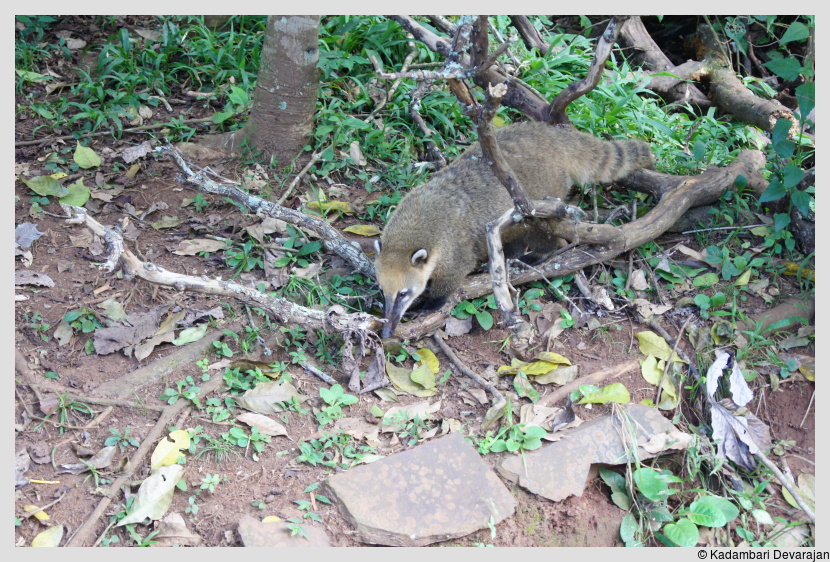
South American coati
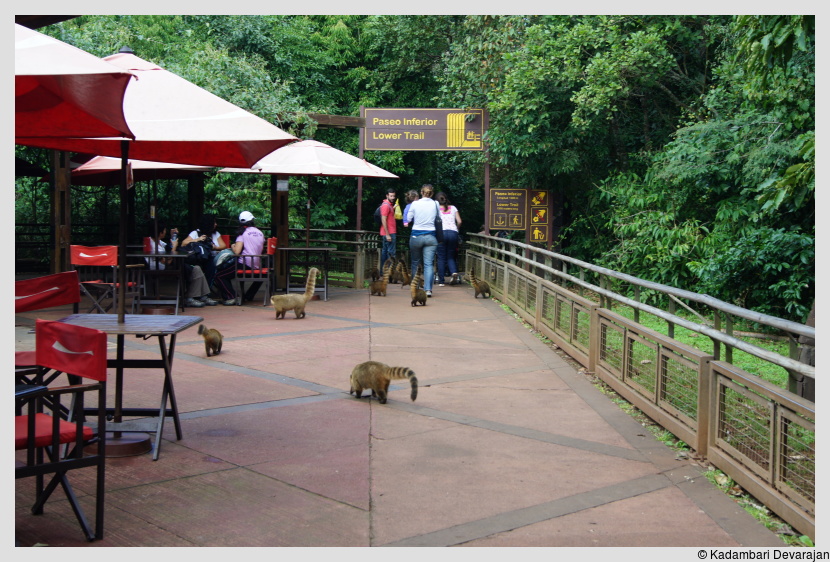
A train of coatis, erm, foraging!
They were of highly variable coloration from a light brown to almost black, belong to the raccoon family, and exasperated (and enchanted) everyone in the vicinity with their antics. They were particularly aggressive at eating areas - we saw one person's food being grabbed out of his hand and completely disappear in a coati haze. But then, he was the only one stupid enough to bring food outdoors. Another guy had his hand scratched by a coati - when there were boards all over asking people to NOT feed the coatis or capuchin monkeys for they "scratch, bite, and steal". The coatis would touch their long noses to the ground and go sniffing all over the place. Occasionally, we could catch sight of the long, anteater-esque tongue. They were predominantly ground dwelling, although we could see them on the low branches of the trees. They are highly inquisitive omnivores and would come sniffing upto people. It was a trifle sad to see them scavenging and begging for food from visitors inside a national park. They would look you in the eye every so often, and since you have no food in your hand, they would get back to their foraging with their muzzle to the ground. Sniffing away to glory with his (I think!) wet muzzle, and the gorgeous dark tail with concentric white rings running all over waving through the air with a mind of its own, my first coati would be hard to forget.
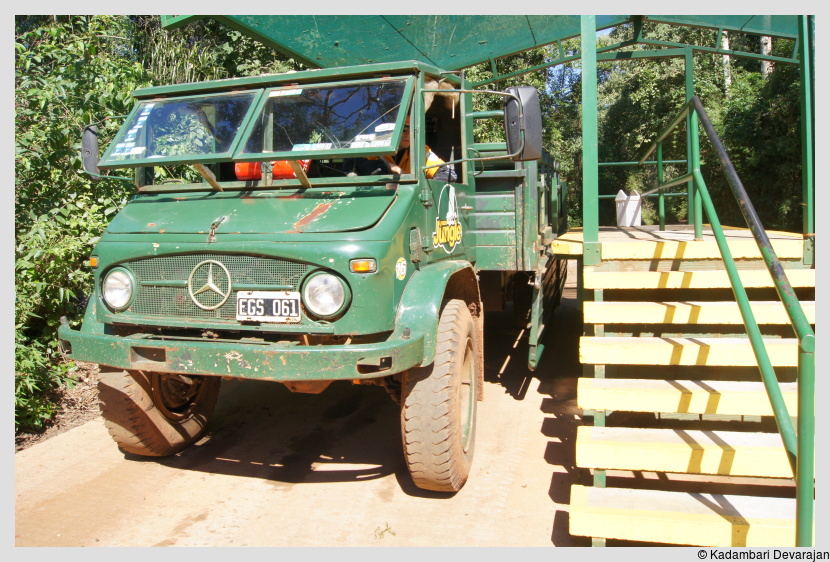
The Jungle truck
The truck arrived just in time and we scrambled on for our ride through the jungle. It was quite nice and the host kept ladling out tidbits of information about the place and its wildlife, in addition to fielding questions. I was a little disappointed with how loud the whole affair was - the host had a microphone through which there would be this running commentary which was incongruous and could be avoided. The commentary was good, but whizzing through a rainforest on a truck with someone talking through a mic is definitely not. Thankfully, it was a short trip and we got off near the river. We quickly changed into our swimsuits and packed all our stuff into the waterproof bags that JUNGLE folks provided. Our first step towards to the river resulted in a gorgeous Argentina black-and-white Tegu that scooted into the dense undergrowth before we could get a picture. It was about the size of a water monitor and is said to fill the same ecological niches - but, boy did it look like a chess board had sprouted legs!
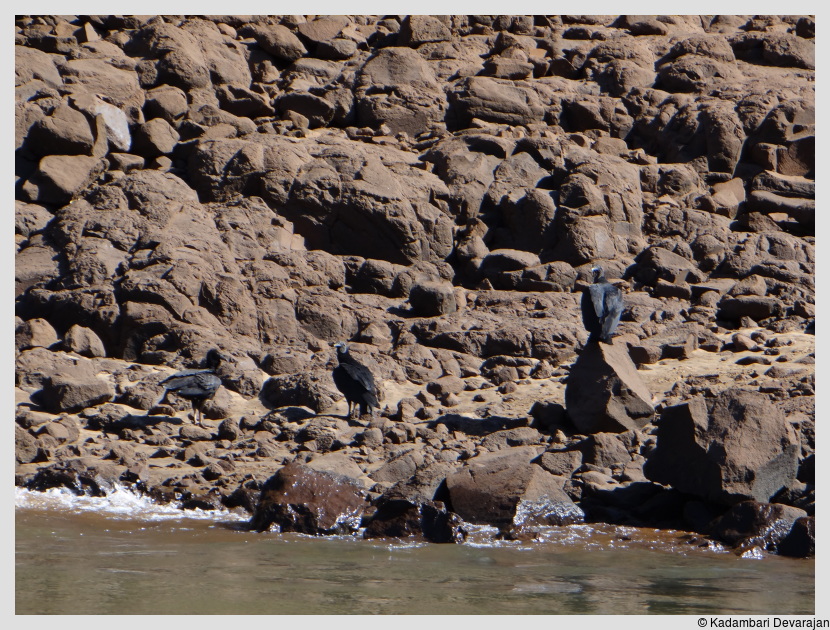
Black Vultures

Some of the smaller falls on the lower trail
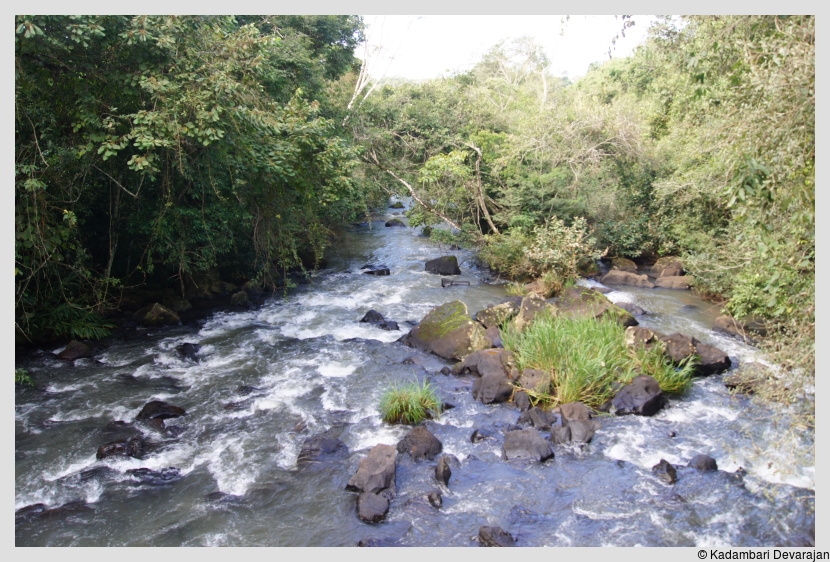
A forest stream.
My partner shares a fascination for the capybara with George Schaller. Before this trip, one of his posers to me was,"Do you think we will get to see a capybara?" -- I answered in the negative since we were spending most of our time in the cold Patagonian deserts and one can't expect to see much in a couple of days in a rainforest. In his book A Naturalist and Other Beasts, Schaller says the following about the capybara: "Although widely distributed throughout their range in the lowlands from Panama to Argentina, capybaras are infrequently seen in the wild. Searching for them along forest-fringed rivers and in marshes, I found their three-toed tracks, like those of a big bird, and saw their droppings as large as those of a moose. But the animals themselves remained elusive, skulking in thickets. Having no den, they seek refuge in water when disturbed, and there hide themselves by silently submerging, leaving only their nostrils and eyes above the surface. One could conclude that the species is by nature nocturnal, but it is not. Capybaras have good reasons for being cryptic. In Argentina, they say, "Anything that walks ends up on a skewer." Everywhere, capybaras are hunted for their meat and hides. Several ranches in Venezuela even raise them commercially, the first sustained effort at game ranching for meat in South America. However, capybara en brochette has so far not become a conspicuous item on menus. Some ranchers are loath to harbor capybaras because the species is a wild reservoir for equine trypanosomiasis, a deadly disease of horses. Yet in spite of almost continuous harassment, the animals have endured and, in fact, have done so well that they are one of the few large mammals in South America that is not endangered. But to succeed they had to change their habits in the wild: thus, in the face of human pressure, they became nocturnal and shy."
So, when we got on the boat ride into the falls, we were not expecting to see one of these. A Yacare Caiman, maybe. A capybara, nope. The first six kilometres of the ride, we were allowed to hang on to our cameras. Just as the boat slowed down and we were photographing some black vultures, the boatman suddenly cried, "Capybara!" We scrambled to the other side of the boat and caught sight of 5 familiar faces in the water, just their eyes and upper snout visible. There was an adult pair and three young. As we watched, one slowly got out of the water and onto the land and the largest one turned to face us, squatting on his haunches! The rest followed and soon all of them were in the small sandy patch on the river bank nonchalantly basking away in the midday sun.
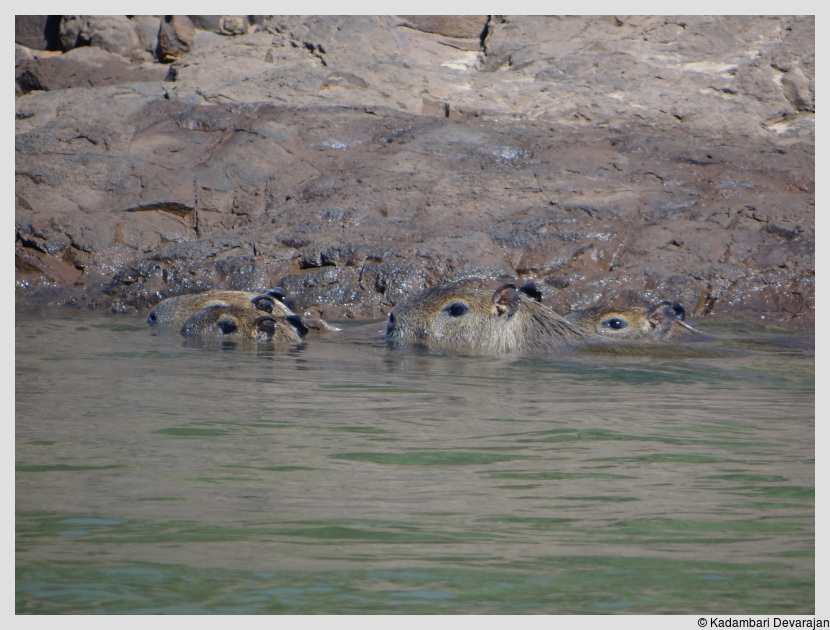
Our first glimpse of the capybara - a family barely visible in the water.

The largest capybara clambered on to the bank, rather clumsily ...
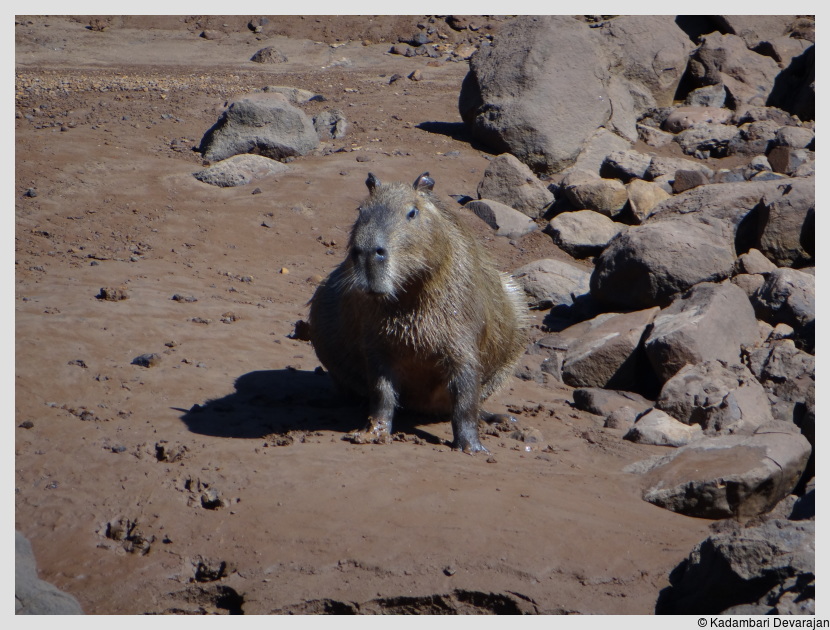
... and sat on his haunches, looking us in the eye!
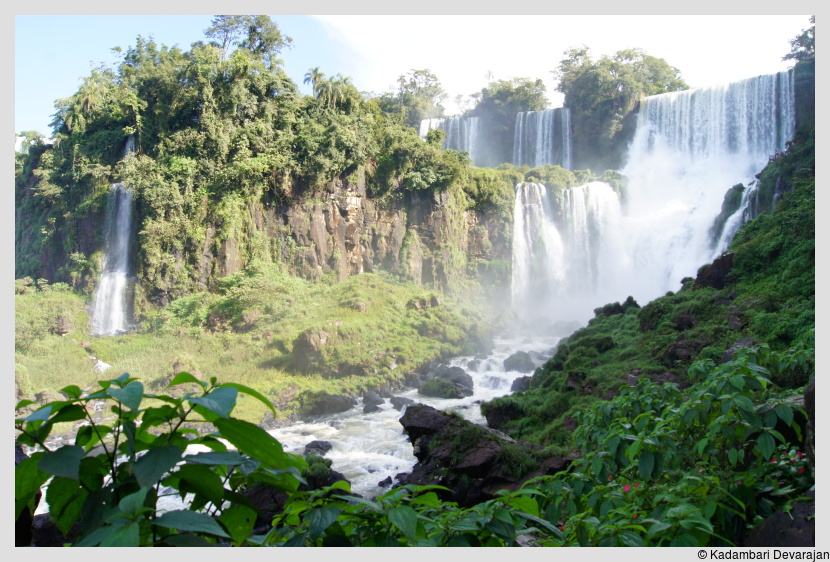
The Iguazu Falls
We proceeded towards the falls and they really took us INTO the falls. We got drenched (dunked?) in first one near the Devil's Throat and then another (maybe San Martin's). It was very cold and we shivered and shrieked like kids on a rollercoaster ride in a water theme park - our sounds silenced by the fierce loudness of all the waterfalls combined. We got back on land, changed into dry clothes, and walked the Circuito Inferior (or lower circuit) down to the mini-train station for our eco-ride. We did not see any opossums supposedly common in the leaflitter here, but did see some lizards (yet to be id-ed) on the rocky surface near the Bosetti falls when looking for some Great Dusky Swifts - managed a glimpse of one as well.
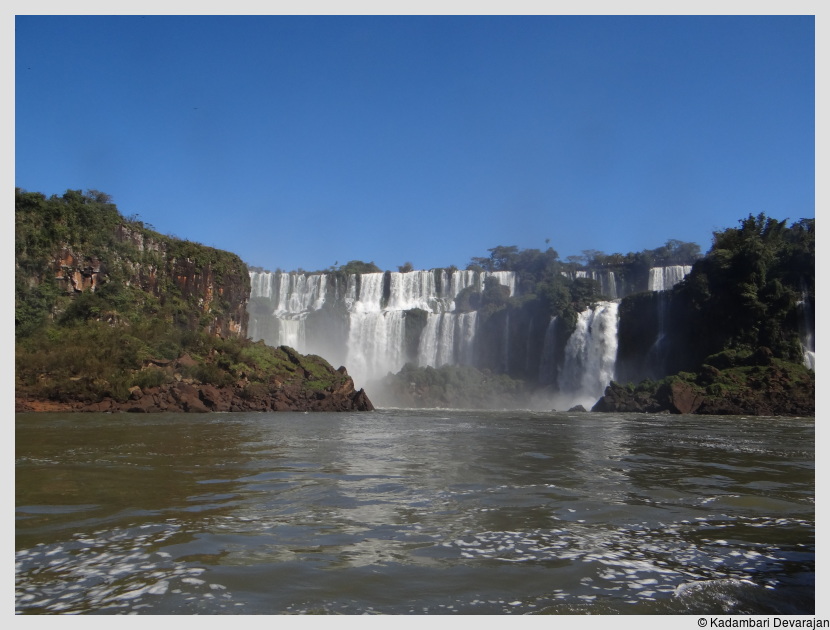
The falls from the boat
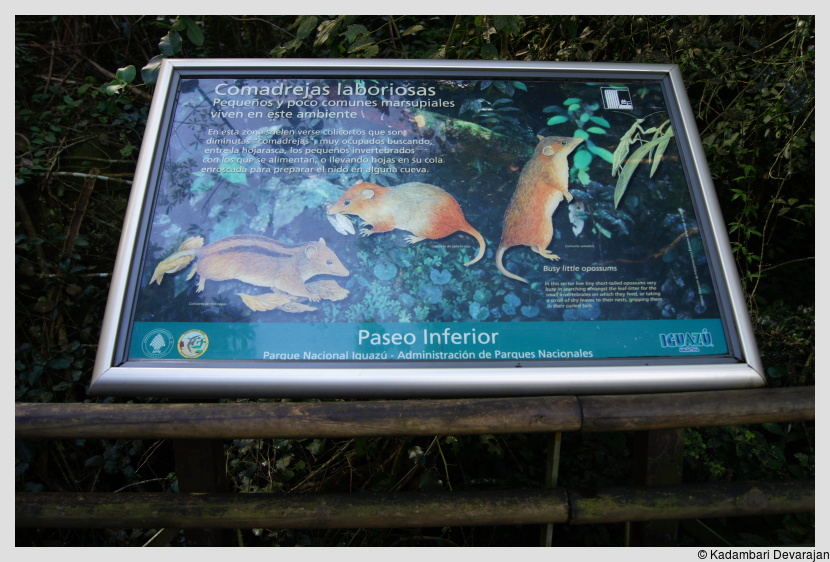
The opossums' haunt

Empanada - our favorite food in Argentina!

Tarta de calabaza
We stopped at one of the small cafes, teeming with coatis outside, and gorged down maiz y queso empanada (corn and cheese empanadas), tarta de calabaza (pumpkin tart), and gaseosa (fizzy drink). While rushing down to the station, we happened upon some agoutis on a meadow as well as black capuchin monkeys mingling with coatis in a shady, forested patch. We later saw a guinea pig near the railway line but could not get a photograph. We had also seen some insectivorous bats on our first evening in the area.
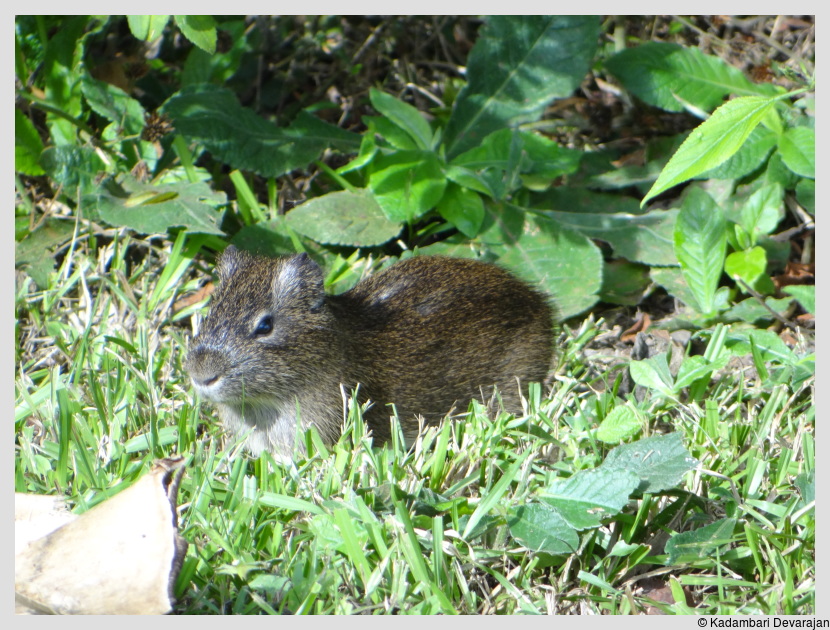
Azara's agouti
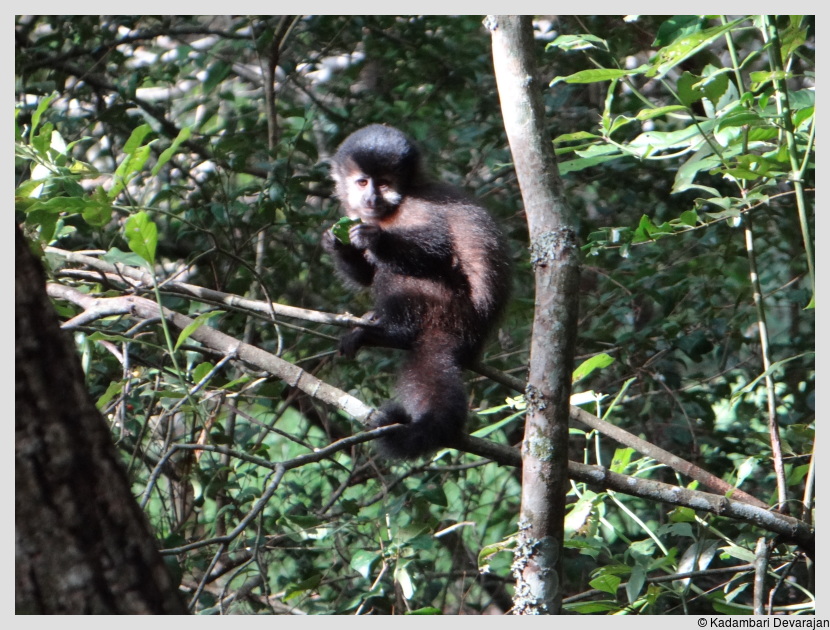
Black capuchin monkey
From my wishlist, I'd had my fill of coatis. Thank you. But the Toco Toucan was still elusive. I had seen the aracari from the toucan family, but still ... We had just our 'romantic' eco-ride left and it would be no fun without that characteristic avian ambassador of these forests - the toco toucan!
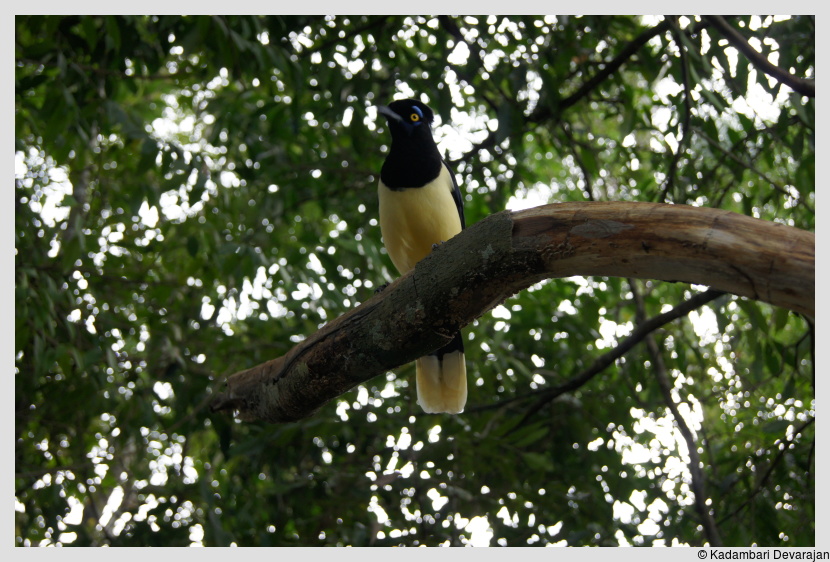
A friendly curl-crested jay landed right above me and called until I took notice!
We took the train and got off at the station for the Devil's Throat. A couple there recommended that we check the falls out before the boat ride and said it was worth the 45-min walk. So off we trudged. It was a nice trail constructed right over the river. We managed to see a fairly large catfish (locally called Surubi) found commonly in the river and some birds.
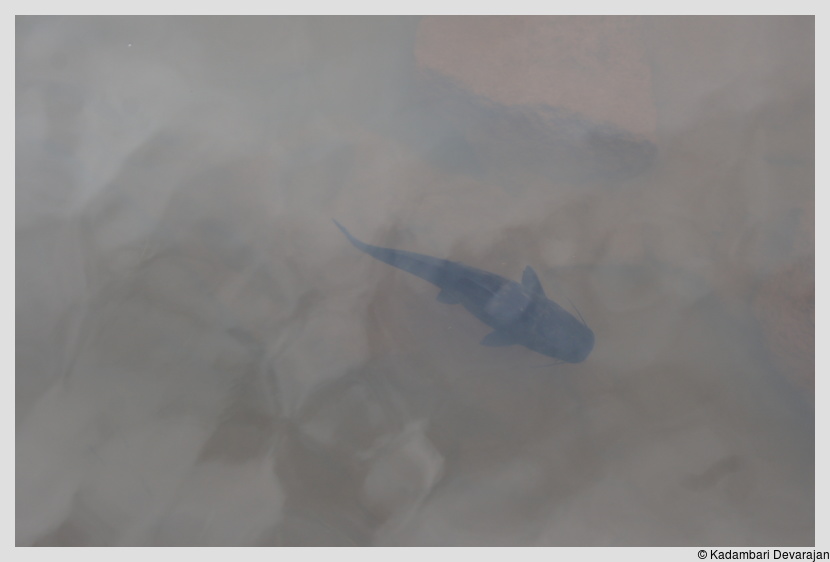
Unid species of catfish (called Surubi locally)
The view at the Devil's Throat was simply spectacular. We were truly amazed, finally, that day. The amount of water flowing there was bewildering! Looking at the falls, Eleanor Roosevelt is supposed to have said, "Poor Niagara" - not that I knew or cared for this tidbit when watching the spectacle. We walked back to our quiet boat ride. It turned out to be a float (rather than a boat) but was quiet.

The Iguazu river at sunset
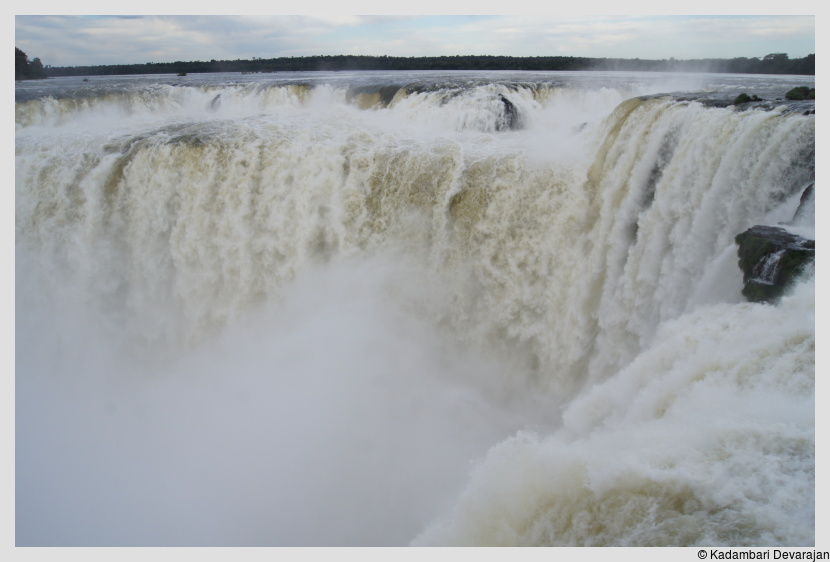
A closer look at the Devil's Throat...
We saw some toucans fly by in the distance but too far across the river to get a good look. We were a little disappointed as our uneventful boat ride came to an end, when the boatman pointed at something at the distance. I looked in the direction he was pointing to and saw a Toco Toucan sitting at the apex of a tall leafless tree. For a second, I froze - instinctively I was going to say hornbill. The resemblance in size and posture was uncanny! Both of us managed some photographs before it flew away into the sunset. Seriously. And the camera's battery died immediately thereafter. It was the last picture of the day for us.
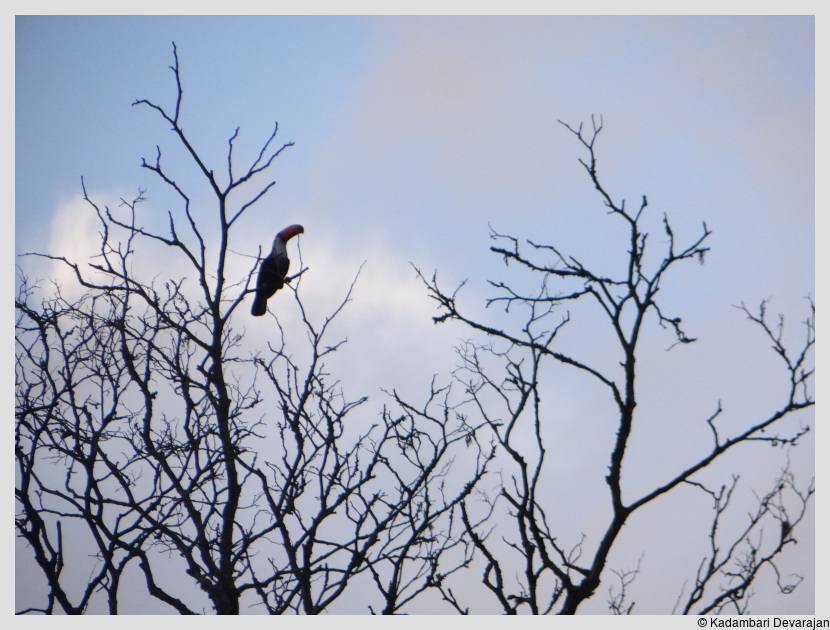
The toco toucan - finally!

The toucan taking flight ...
We made it back just in time to pick our bags up from the hotel and take a cab to the bus station. We spent our last night in Argentina on a luxury bus to Buenos Aires. Just as we got off the bus in Buenos Aires, we spotted some Monk Parakeets on the small trees right inside the bus terminus. These turned out to be the last birds of our Argentina trip.
When the bus attendant (is that right?) came and asked me if I wanted a nightcap, "Maybe some champagne or whisky?", I didn't know whether he was serious or joking. I didn't bother to test his seriousness and didn't really need a nightcap after a long day outdoors ...